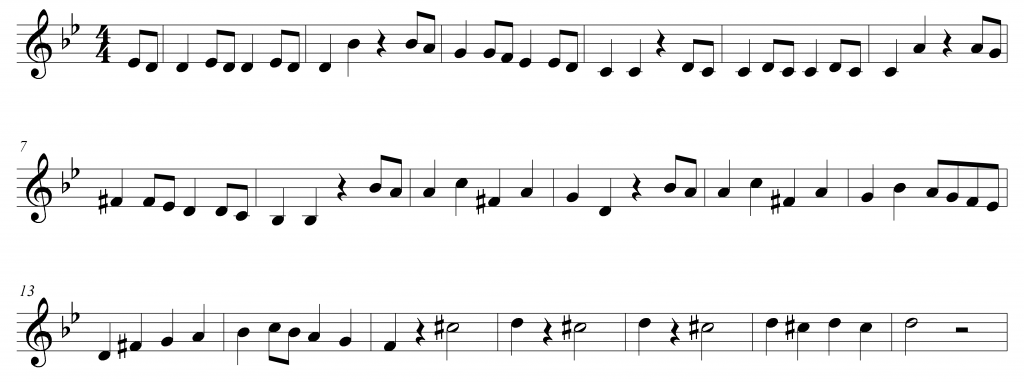How To Write A Good Melody: Motives
In our Tuesday Composition Corner, we are now discussing the elements for when you write a good melody. Last week, we talked about melody contour. This week we’ll talk about the 2nd principle, but one of the most important, of constructing writing a good melody: a good motive.

A good melody has one interesting motive (and sometimes a few more).
A motive is a short musical idea. It is the shortest fragment of a melody which the listener can identify as a specific melody. Here are some examples of famous motives:


Because constructing a good motive is so important, it is very valuable to give students a lot of practice in this area. Recently, we had a studio wide “Cartoon Motive Contest” which gave students a fun way to practice composing motives. I plan to do this again next year as it really helped hone in the idea of just one great musical idea. Many teachers are surprised to find out how difficult it is for a student to come up with a short motive. The ability to say something concisely takes practice both in speech and in composing music. (I’m obviously still doing it in speech and writing!)
A motive becomes the cornerstone for a composition. Once a good motive is constructed, it can be manipulated in many different ways to write a good melody and add interest. Some of the ways to manipulate a motive include:
- Repetition – At the original or a different pitch. Anything important is worth repeating and you’ll notice that most melodies that you remember have a repeated motive in them. Repeating a motive once is good, 2 times is great, though it is best to vary the 2nd time, but 4 times is usually overkill.
- Sequence – Try playing your motive several more times starting at a different pitch each time but keeping the intervals the same.
- Inversion – Start on the first note of your motive. Does the next note go up a 5th? Then, inversion would mean to play the note down a 5th.
- Retrograde – Play the motive backwards. You can try playing the notes backwards with the rhythm of the forward motive or playing both the notes and rhythm backward.
- Retrograde inversion – Invert the backwards motive
- Diminution – Make all of your notes half of their original value.
- Augmentation – Make all of your notes twice their original value.
- Variation – In a variation, some of the main components of the motive are present, but presented slightly differently (different rhythm, different intervals, etc.)
- Contrast – This is arguably not something you do with the original motive, but rather something you do to contrast with the original motive. Though it is obviously different material, it should feel like it is a natural answer to the main motive.
It is a good mini-exercise for a student to try to manipulate their motive in all of these ways. Though this is not necessary to create a good composition, it is helpful for them to practice a variety of techniques to generate enough synchronous content for a melody. If you are working with young students, it is best to ask them to only use one of these techniques on their motive at a time.
To be the best at teaching these techniques, it is helpful to practice identifying these techniques in other compositions. Try your hand at identifying the motive in the following melody. Describe what the composer does in the notes immediately following the motive. Does he repeat at the same or different pitch? Does he invert the motive with a few alterations? Is his contrasting material really contrasting or is it derived from the original motive?

